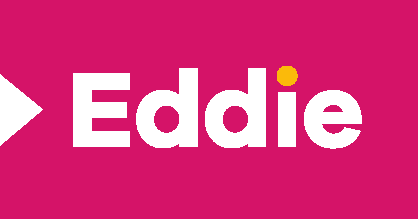Collaborative video production within organizations offers numerous advantages when employees capture footage and professional editors handle post-production. This approach combines authentic storytelling from team members with expert editing, resulting in polished, professional content. The internal co-creation model delivers cost efficiency, faster turnaround times, more authentic messaging, enhanced staff engagement, and valuable skill development across the organization. Companies implementing this approach can scale their video production while maintaining high-quality standards.
What are the benefits of co-creating videos internally?
Empowering your team to participate in video production creates a powerful combination of authentic content and professional quality. When employees handle filming while production experts manage editing, companies experience multiple advantages. This collaborative approach significantly reduces costs by eliminating the need for full production crews while maintaining professional standards through expert post-production.
The co-creation model also dramatically shortens production timelines. Without scheduling conflicts or waiting for external teams, your videos move from concept to completion much faster. This agility allows organizations to respond to communication needs more efficiently.
Perhaps most importantly, when your own team members appear on camera, the authenticity shines through. Videos feature real employees with genuine knowledge and passion, creating more relatable and trustworthy content than polished but impersonal professional productions.
How does internal video co-creation improve employee engagement?
When staff members participate directly in video creation, they develop a strong sense of ownership in both the content and the company narrative. This collaborative approach transforms passive viewers into active contributors, fostering a deeper connection to organizational messages.
Cross-departmental video projects naturally build team cohesion by bringing together colleagues who might otherwise rarely interact. Working toward a common creative goal breaks down silos and creates bonds that continue beyond the project itself.
The co-creation process also offers employees valuable creative outlets that traditional corporate communication lacks. Many team members welcome the opportunity to showcase skills and interests that their day-to-day roles may not utilize, from storytelling to on-camera presence.
As participants develop confidence in their video creation abilities, this newfound empowerment often extends into other areas of their work, creating a more engaged and proactive workforce overall.
What types of videos work best for internal co-creation?
Training materials represent an ideal starting point for co-creation, as subject matter experts can directly share their knowledge while professional editing ensures clear, engaging presentation. This approach combines authentic expertise with polished delivery.
Company culture showcases gain tremendous authenticity when created by employees themselves. Team celebrations, day-in-the-life content, and workplace tours feel genuine when captured by the people who live that culture daily.
Product demonstrations benefit greatly from featuring employees who work directly with these offerings. Their intimate knowledge and natural enthusiasm translate into more compelling and credible presentations than hired talent could deliver.
Customer testimonials and case studies can be effectively captured by client-facing team members who already have established relationships, often yielding more candid and detailed feedback than formal external productions.
Internal communications like news updates, executive messages, and change management announcements maintain professional quality while gaining authenticity through the co-creation approach.
How much money can companies save through internal video co-creation?
The financial advantages of collaborative video production are substantial when comparing comprehensive costs. By eliminating the need for full external crews while maintaining professional editing standards, organizations typically reduce production costs by 40-60% per video.
Agency fees represent a significant portion of traditional video budgets. The co-creation model eliminates or substantially reduces these recurring expenses, particularly valuable for companies with ongoing video needs.
While some initial equipment investment may be required, today’s high-quality smartphone cameras paired with basic accessories provide excellent results at minimal cost. This initial outlay is typically recovered after just a few productions.
When considering ROI, organizations must factor both tangible savings and enhanced effectiveness of more authentic content. Videos created through internal collaboration often generate better engagement metrics, making them more cost-effective regardless of production method.
What equipment is needed for employees to co-create videos?
Basic smartphone setups can deliver remarkably professional results with minimal investment. Most modern smartphones feature excellent cameras that, when paired with a simple tripod and external microphone, can capture high-quality footage suitable for professional editing.
For organizations ready for the next level, affordable DSLR or mirrorless cameras paired with basic lighting equipment elevate production quality while remaining user-friendly for employee operators.
Audio quality often differentiates amateur from professional video. Simple lavalier microphones that connect directly to smartphones represent the most important initial investment for teams beginning their co-creation journey.
Software considerations should focus on simplicity. While editing professionals will handle post-production, basic applications for capturing and transferring footage should prioritize ease-of-use to encourage employee participation.
How to implement a successful video co-creation strategy?
Start by establishing clear guidelines for your internal video program. Document standards for filming, recommended equipment setups, and expectations for participation. Clear parameters help employees feel confident in their contributions.
Provide basic training focused on practical skills rather than technical complexity. Short workshops covering fundamental techniques like framing, lighting, and audio recording give staff the confidence to participate effectively.
Create meaningful incentives for participation beyond simply adding to workloads. Recognition programs, skill development opportunities, and integration with existing responsibilities increase voluntary engagement.
Develop a straightforward workflow that makes the submission process effortless. Ideally, employees should be able to upload raw footage directly to the editing team through an intuitive platform designed for non-technical users.
Transforming your company culture through collaborative video creation
Organizations implementing co-creation practices frequently report broader cultural benefits beyond improved video content. This collaborative approach naturally fosters innovation by empowering employees to contribute their perspectives and ideas.
Video co-creation democratizes communications by giving voice to staff at all levels. When everyone can potentially contribute to company messaging, hierarchical barriers diminish and more diverse viewpoints emerge.
The transparency inherent in this model builds trust throughout the organization. When employees regularly see authentic content featuring their colleagues, it creates a more open communication environment overall.
Perhaps most valuably, the skills developed through video co-creation—from storytelling to visual communication—transfer to many other aspects of professional life, creating lasting benefits for both individuals and the organization. If you’re interested in learning more, contact our team today.

